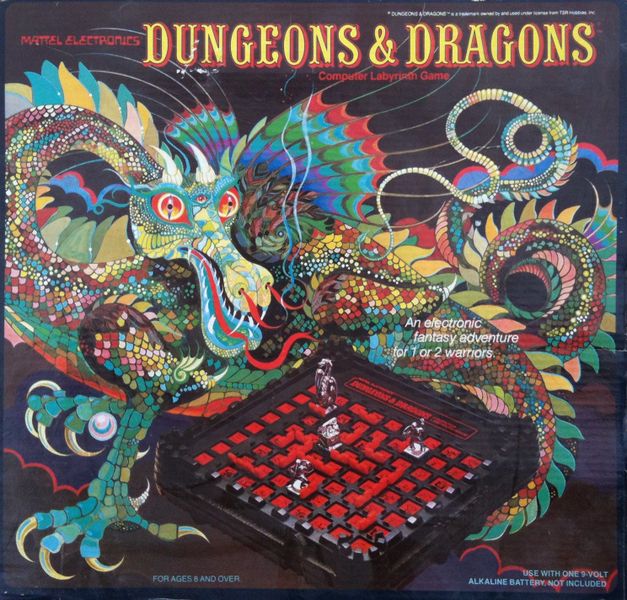Dungeons & Dragons Computer Labyrinth Game (1980) Board Game
The Dungeons & Dragons Computer Labyrinth Game was released in 1980 by Mattel Electronics. It is a solo or two-player game that falls under the categories of adventure, electronic, exploration, fantasy, and maze. Designed by Joe Sengir, this game challenges players to navigate through a labyrinth while encountering obstacles and enemies along the way.
Game Components of Dungeons & Dragons Computer Labyrinth Game
How To Setup Dungeons & Dragons Computer Labyrinth Game
To set up the game, players place the metal warrior figures on their respective starting positions on the board. The game is initialized, and the computer randomly generates an invisible labyrinth with 50 walls, the treasure, and the dragon. Players choose their secret rooms and are ready to start their adventure. The board is touch-sensitive, and players move their figures by pressing the space they are moving into, which triggers electronic sounds to indicate obstacles or progress.
Gameplay Mechanics and Game Objective
Player Experience
Playing the Dungeons & Dragons Computer Labyrinth Game feels like navigating a dungeon in the dark. The invisible labyrinth and the random placement of walls and the dragon create a challenging and often frustrating experience. Players must rely on the audio cues to map out the dungeon, which can be time-consuming and repetitive. The game’s unique concept is marred by its poor execution, making it more of a novelty than a deeply engaging game.
Pros
Cons
Personal Thoughts on Dungeons & Dragons Computer Labyrinth Game
This game is more suited for younger players, particularly those under 12, due to its simplicity and the novelty of its electronic features. For serious or experienced gamers, the game’s limitations and repetitive gameplay make it less appealing. Despite its flaws, it remains an interesting piece of gaming history, showcasing early attempts to integrate technology into board games.
We are supported by our audience. When you purchase through links on our site, we may earn an affiliate commission, at no extra cost for you. Learn more.

